It’s fast approaching mid-August in Italy, and that means that people up and down the peninsula are preparing for their Ferragosto travels. The summer holiday of Ferragosto takes place on August 15th each year, and is the biggest and most important break on the Italian calendar. Virtually everyone goes on vacation at this time of the year, and for most Italians that means heading to the sun-kissed climes of the south.
In our opinion there’s nowhere better to spend the Ferragosto holiday than Sicily, the Mediterranean island par excellence. This week on our blog we’re taking a look at the cities of Palermo, Catania and Syracuse - three of the best destinations in Sicily for a mid-August break. We hope you get some inspiration from our illustrated guide. Buone vacanze!
Palermo: Sicily's Vibrant Capital
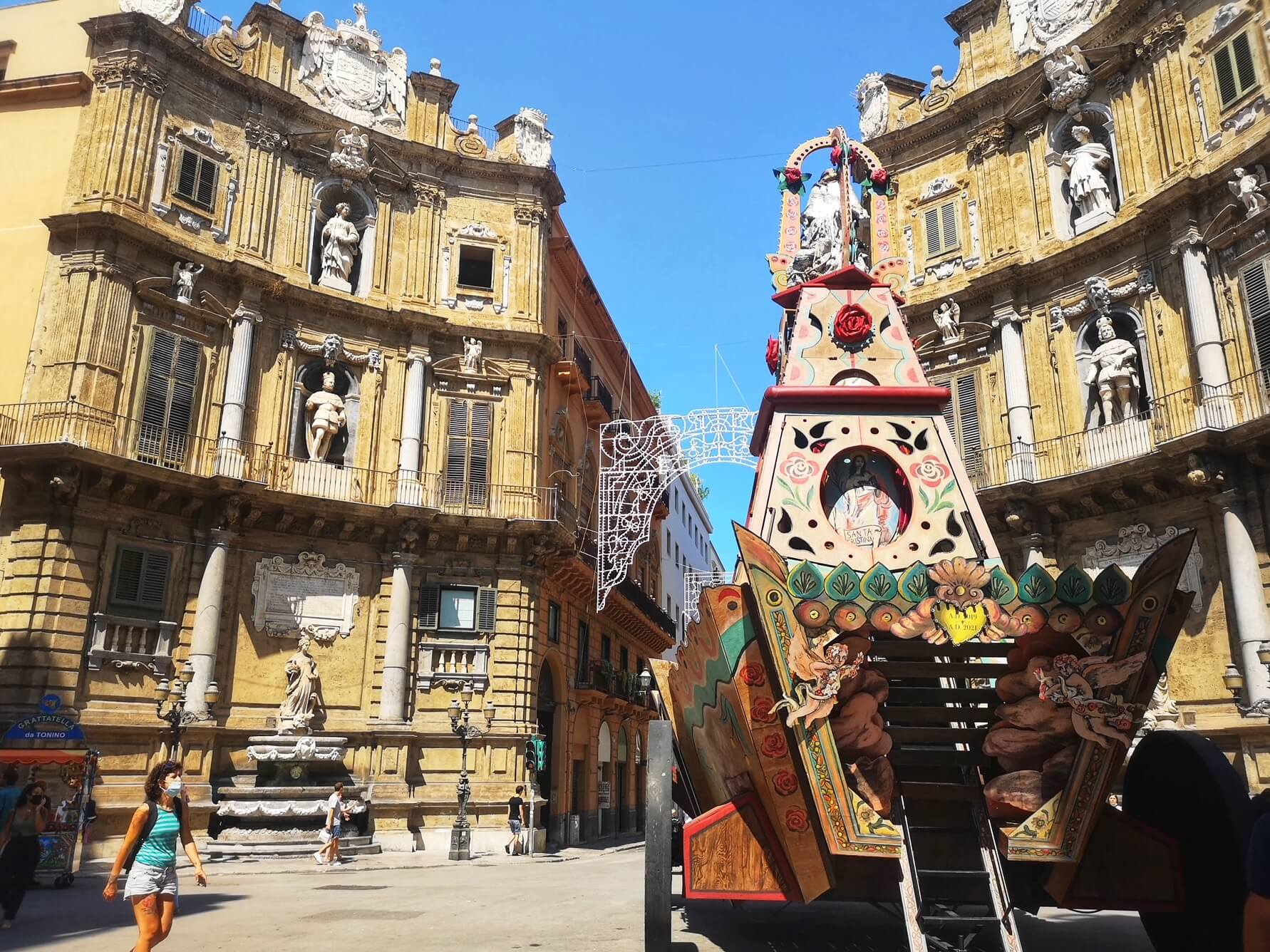
We begin our journey through Sicily in Palermo, the island’s ever-fascinating and vibrant capital city. This sprawling metropolis boasts a fascinating millenial history and has been a melting pot of different cultures and peoples for thousands of years.
In distant antiquity Phonecian and Greek seafarers feuded for control over the strategic port city at the gateway to Europe, located where continents meet; over subsequent centuries mighty Roman emperors, courtly Byzantine potentates, audacious Norman counts, exotic Arab shahs, powerful Spanish kings and more have all stamped their mark on the city known to history as ‘the kingdom of the sun.’ With so many diverse strands and influences shaping the city and its people, it’s little wonder that Palermo offers up a unique atmosphere all its own.
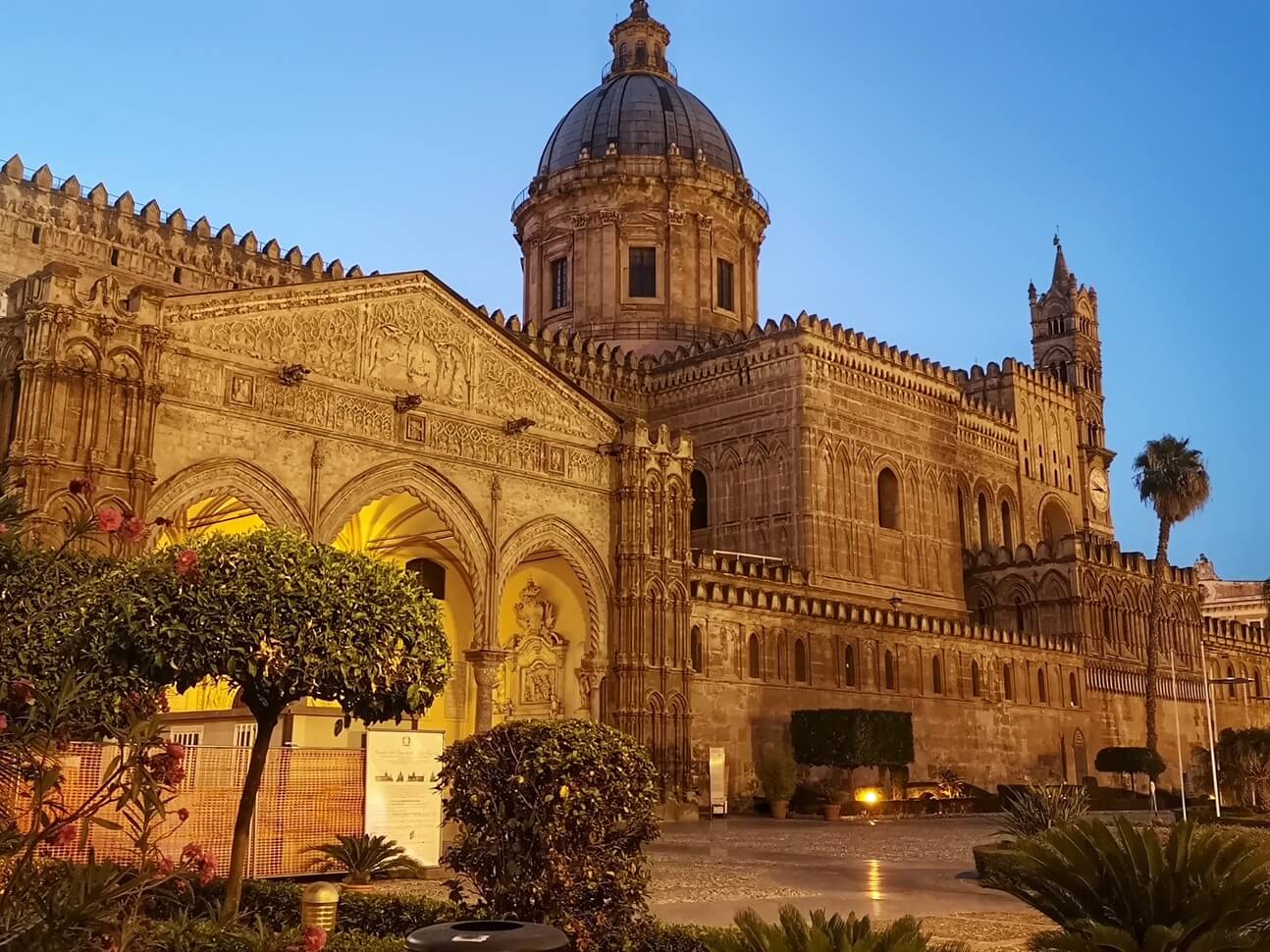 Palermo Cathedral
Palermo Cathedral
You can read the multi-faceted story of Palermo in its wonderful architecture: history buffs will want to begin at the truly jaw-dropping Palazzo dei Normanni. Seat and royal residence of the Sicilian kings since the Norman invasion of Italy in the 12th century, the jewel in the crown here is the Palatine Chapel added to the complex by Roger II the following century. Gaze in wonder at the amazing mosaics, amongst the finest examples of Byzantine art in the world. Scarcely less impressive is the city’s cathedral, a sweeping edifice begun in 1185 and comprising a patchwork of styles from Norman to Byzantine, Gothic to Renaissance, Baroque and beyond.
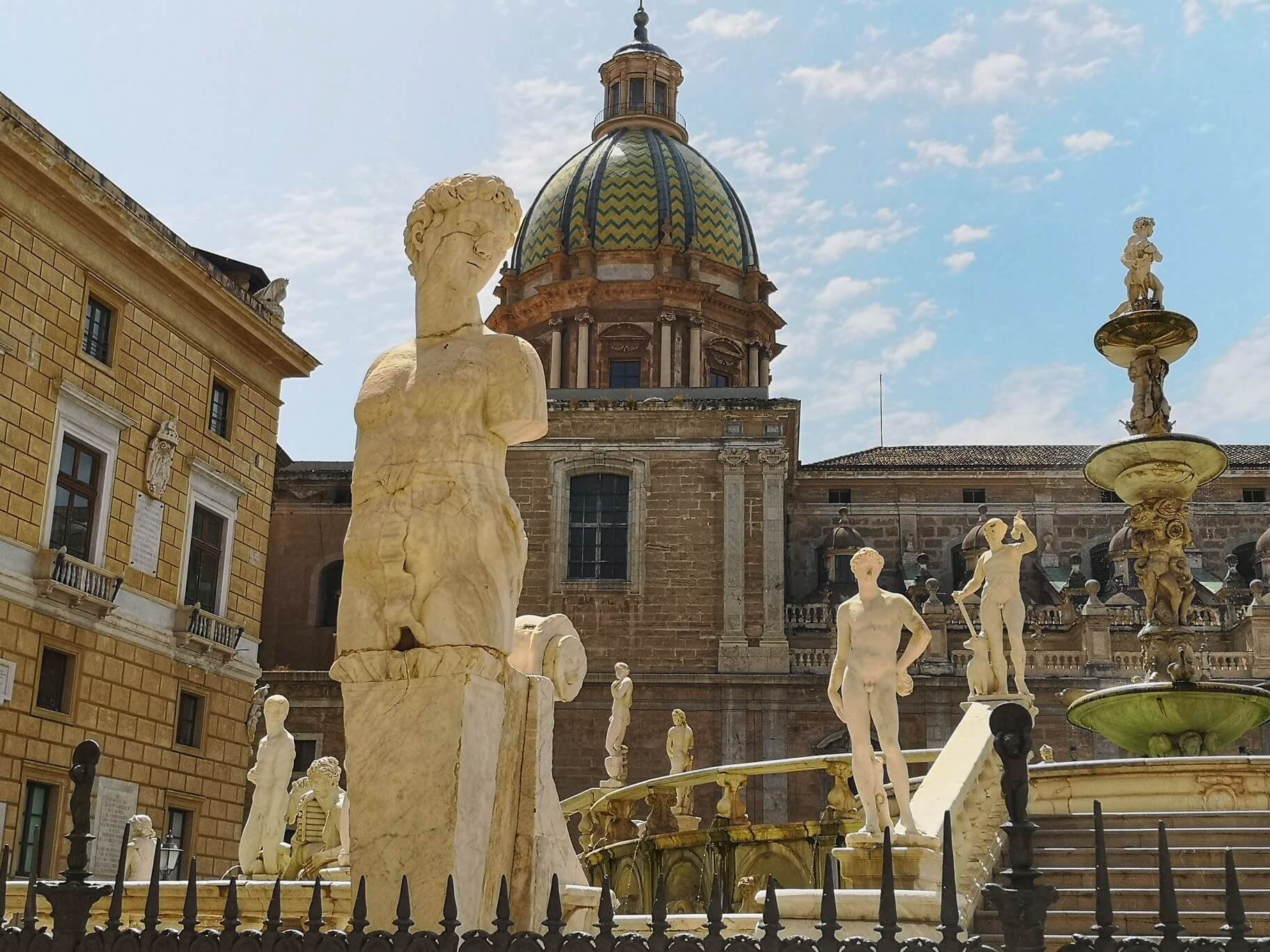 The Pretoria Fountain in Palermo
The Pretoria Fountain in Palermo
Elsewhere, the beating heart of Palermo’s old town lies at the crossroads of central arteries Corso Vittorio Emanuele and Via Maqueda, where elegant palazzi of the so-called Quattro Canti and the bombastic Pretoria Fountain speak to the splendour of the Renaissance and Baroque city. Look out for the distinctively Islamic-inspired domes of nearby San Cataldo to see another side of the city’s history - this is Arab-Norman fusion at its finest. Pop in to Palazzo Abatellis meanwhile to get a taste of the city’s artistic treasures - the terrifying Triumph of Death that dominates the gallery provides a fascinating insight into medieval views on mortality.
Food lovers will rejoice in the sheer variety and quality of Palermo’s culinary offerings; with a cuisine that draws freely from Italian and North African influences, you’ll find dishes here like nowhere else in Italy - don’t miss pasta con le sarde, which combines sardines, fennel, pine nuts and raisins in a lip-smacking pasta sauce.
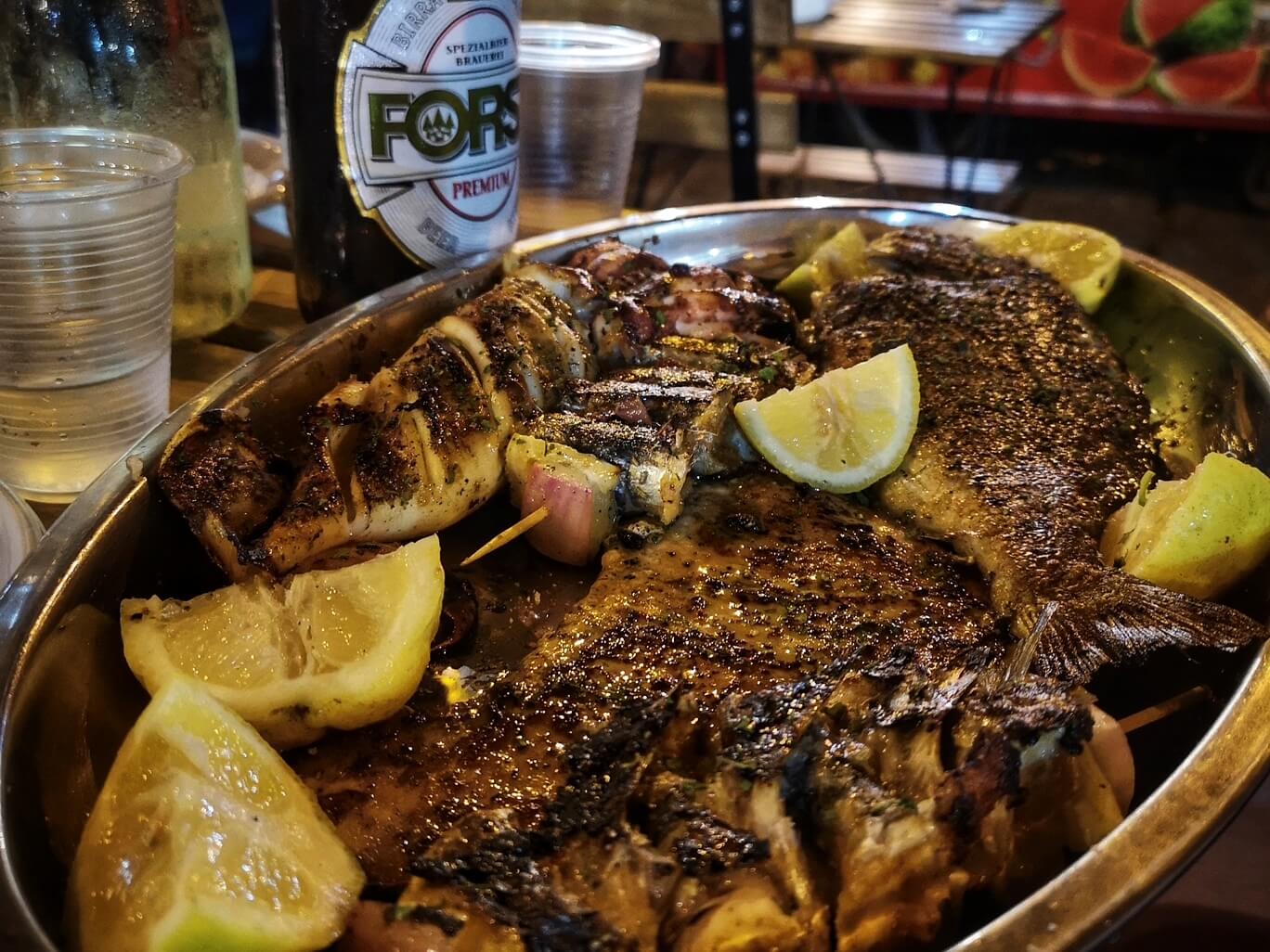 Fresh grilled fish in the Vucciria market
Fresh grilled fish in the Vucciria market
Head to the sprawling, buzzing markets of Capo, Vucciria and Ballarò meanwhile to sample fantastic street food - think fresh fish and seafood grilled in front of you on outdoor braziers. Braver souls should also try Palermo’s famous cucina povera, including lip-smacking potato croquettes, chickpea fritters and of course Pani ca' Meusa - a highly savory spleen sandwich that’s a lot tastier than it looks.
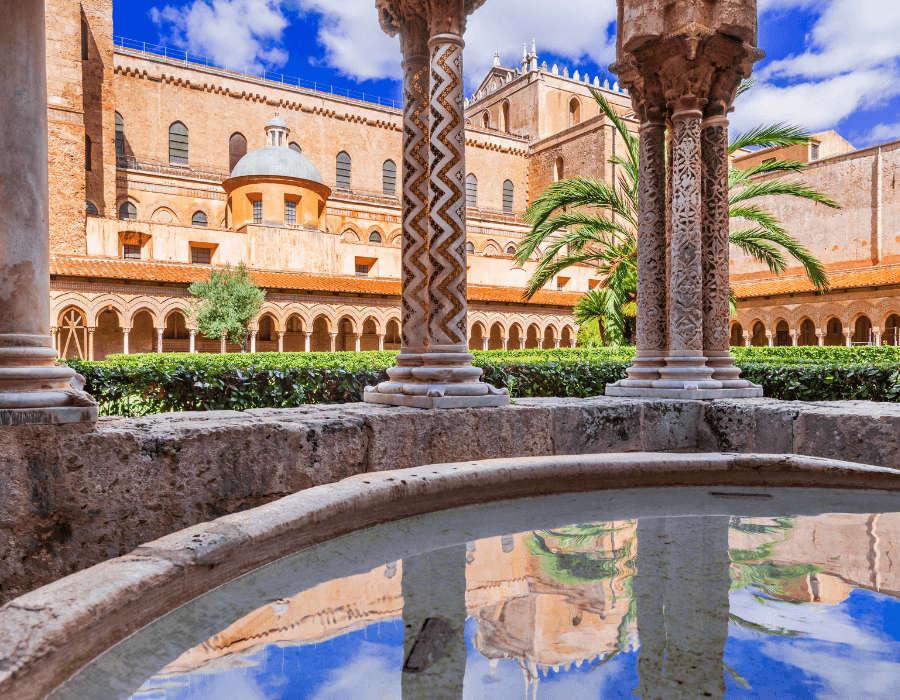 Magical Monreale Cathedral
Magical Monreale Cathedral
When things start to get too hot or chaotic in the city, then head to nearby Monreale cathedral in the hills above Palermo to experience one of Sicily’s finest architectural treasures. The cathedral was begun in 1174 by William II of Sicily, and its 102-metre long interior contains fully 6,500 square-metres of masterful Byzantine mosaics.
If you’re in need of a cooling dip, meanwhile, the seaside community of Mondello is just a 15 minute bus ride away form downtown Palermo - expect fish restaurants, crystalline waters and the Palermo youth strutting their stuff as they promenade during the evening passeggiata.
Catania: In the Shadow of the Volcano
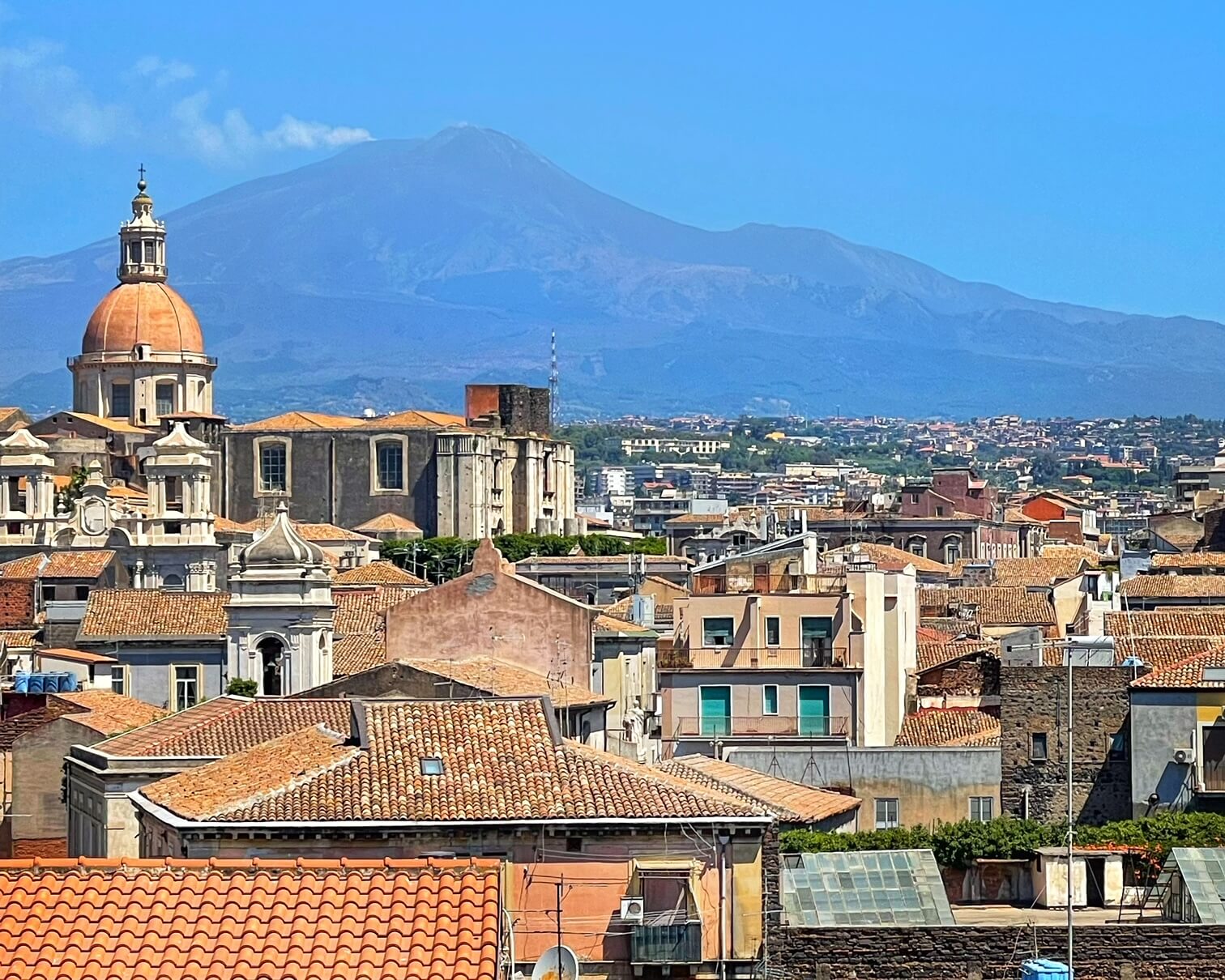
Across the island on Sicily’s eastern shoreline, the city of Catania sits in the foreboding shadow of looming Mount Etna, Europe's most active volcano. Sicily’s second city has been destroyed by devastating lava flows and eruptions numerous times over its history, but the undaunted Catanians never seem to have let that get them down. Although it seems a bit scruffy around the edges at first glance, especially compared to bijou tourist mecca Taormina nearby, there’s plenty to recommend Catania to the intrepid traveller.
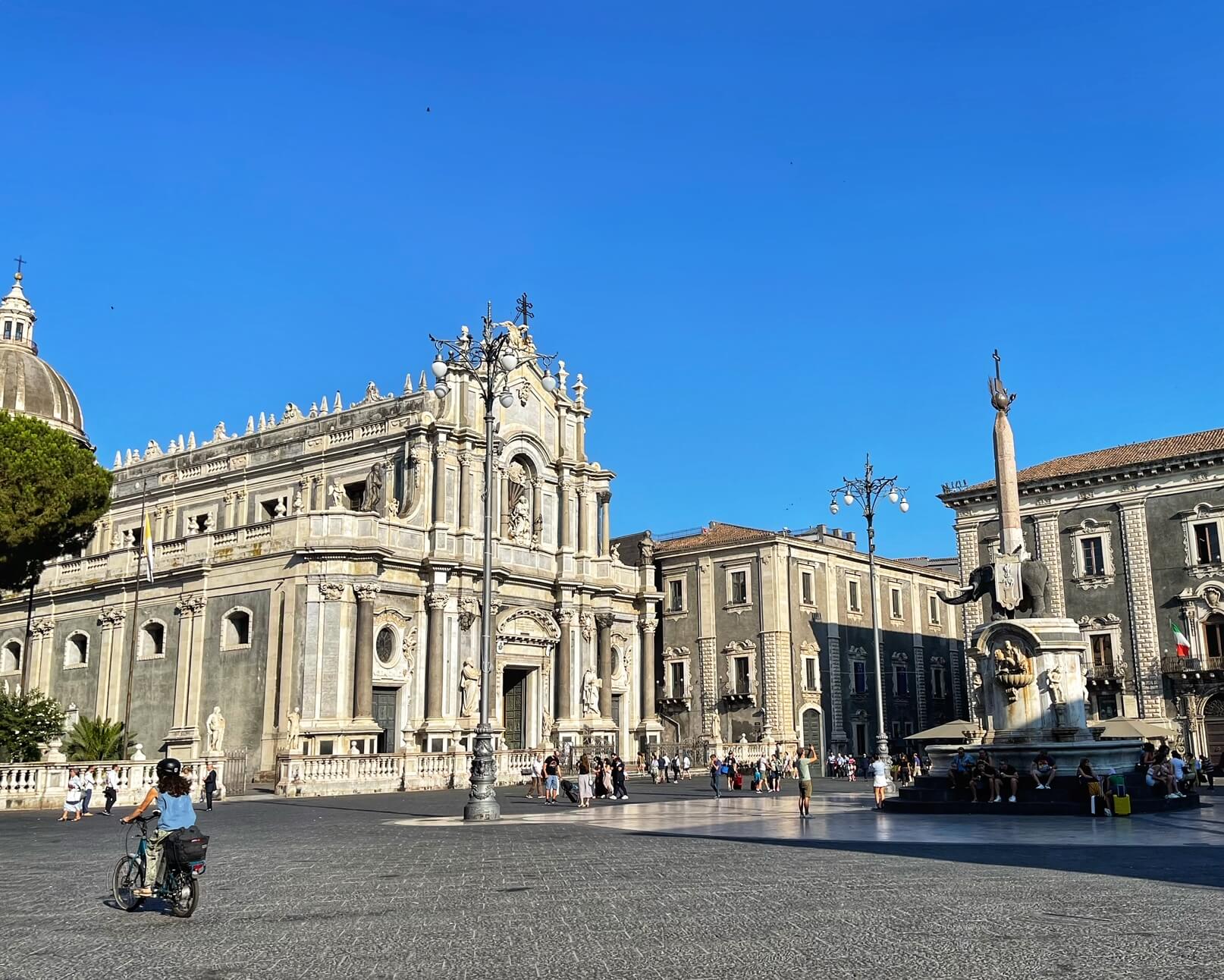 Catania's Piazza del Duomo
Catania's Piazza del Duomo
Much of the action in Catania takes place in and around central Piazza del Duomo, a staggeringly beautiful UNESCO-listed square dominated by the grey bulk of the Cattedrale di Sant'Agata and the charming Fontana dell'Elefante, an ancient Roman sculpture portraying an elephant carved from the local jet-black lava stone surmounted by an Egyptian obelisk.
Other monuments not to miss include the lavish neoclassical opera house, built in 1890 as a suitable setting to stage the operas of homegrown hero Vincenzo Bellini (whose home you can also visit nearby). Worth a look too is the fascinating Benedictine monastery complex of San Nicolò l'Arena, where solidified lava flows were used as the foundations for restorations required after another damaging explosion of Mount Etna. It’s now part of the city’s university, but can be visited on highly-recommended guided tours every hour.
 Catania's fabulous fish market
Catania's fabulous fish market
Beyond the landmarks, perhaps the greatest joy of Catania is to be had in aimless wandering: the streets of the densely packed historic centre are pure theatre, nowhere more so than in and around the city’s thriving open-air fish market, La Pescheria. Gaze on massive swordfish, delicate red prawns, sea urchins and everything in between as the fishmongers yell and haggle their way through the morning before retiring to the bars and restaurants of the nearby alleys, where thousands of umbrellas shield hungry diners from the fierce summer sun.
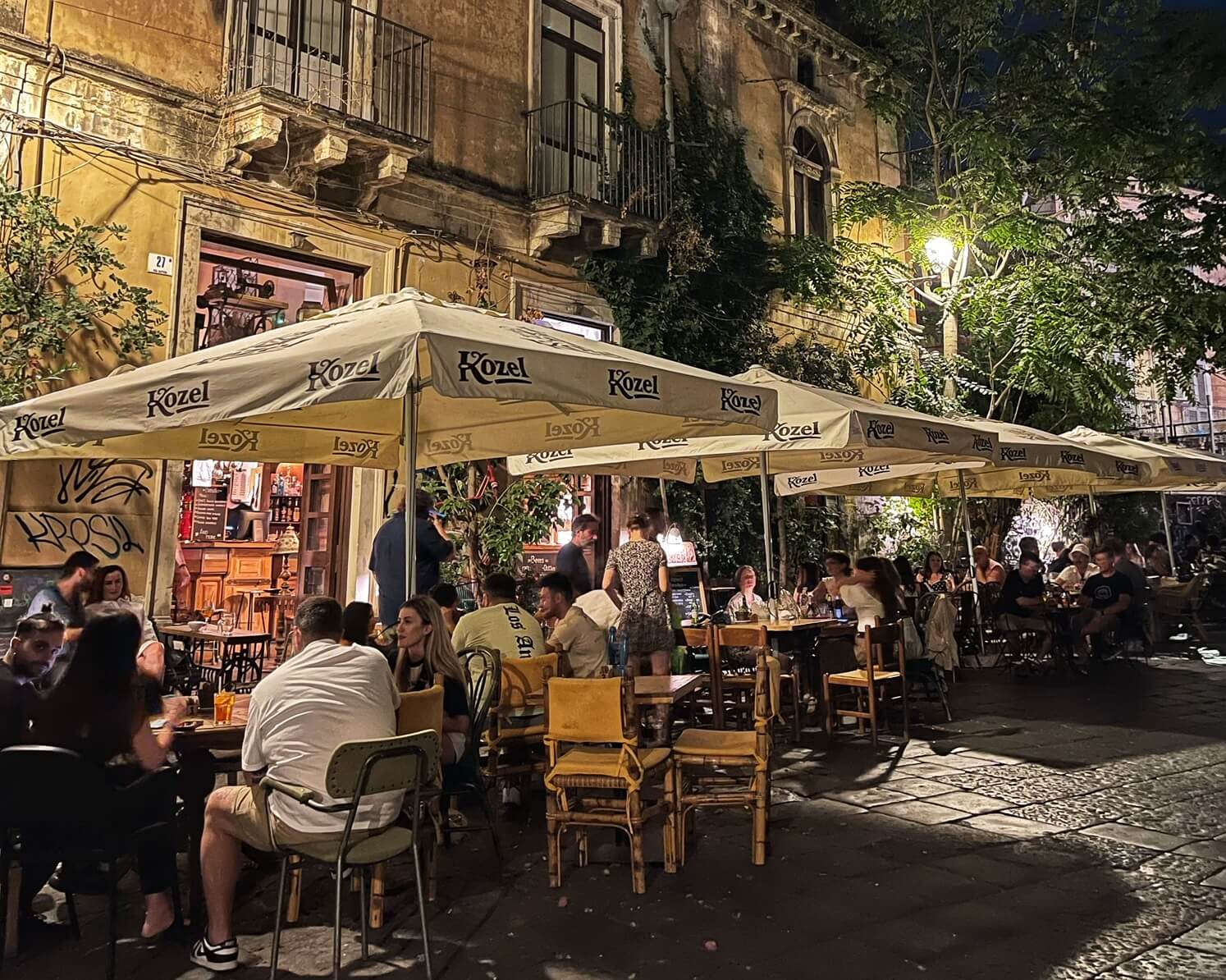 Catania's always buzzing nightlife
Catania's always buzzing nightlife
Catania’s largely pedestrianised streets and squares are home to countless down-to-earth restaurants serving up the freshest of fish, grilled meats - horse is a particular local specialty - and delectable pasta alla norma (invented at venerable Catania institution Nuova Trattoria del Forestiero) at inflation-busting prices. Bars like BarnAut, Nievski, Vermouth and Mama Africa meanwhile are sure to keep the good times rolling long into the night.
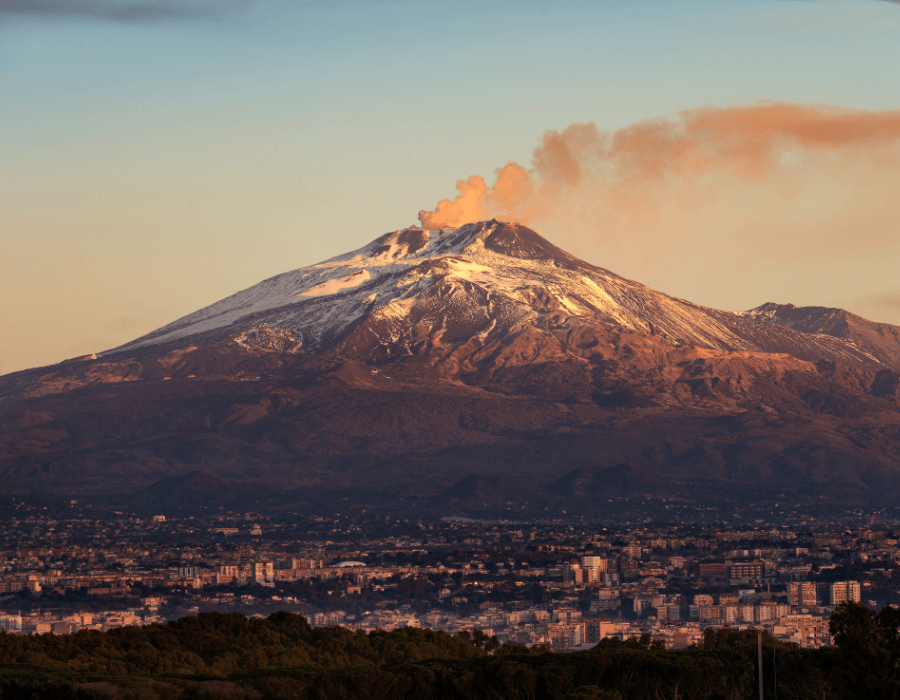 Mount Etna
Mount Etna
And of course, no trip to Catania would be complete without a trip up Mount Etna itself! The regularly-erupting volcano is starkly beautiful, and it’s well-worth spending a day hiking through the desolate landscape. If a 3,000-metre hike doesn’t sound like your idea of fun, you’ll be relieved to find out that a cable car will take you part of the way. If you want to go all the way to the top of the upper crater, you’ll need to do so in the company of a licensed local guide.
#
Syracuse: Sun-Kissed Ancient Splendour

Located on and around an island off the south-eastern corner of Sicily, historic Syracuse can easily lay claim to being one of Italy’s most spectacularly-sited cities. Founded by intrepid Corinthian settlers on the island of Ortygia way back in 734 BC, the colonists soon expanded their settlement to the mainland, and Syracuse rose in importance to become one of the most important cities in the Mediteranean. A centre of learning and culture in the Greek world, Syracuse was home to Archimedes (he of the Eureka moment) and the largest papyrus colony in Europe.
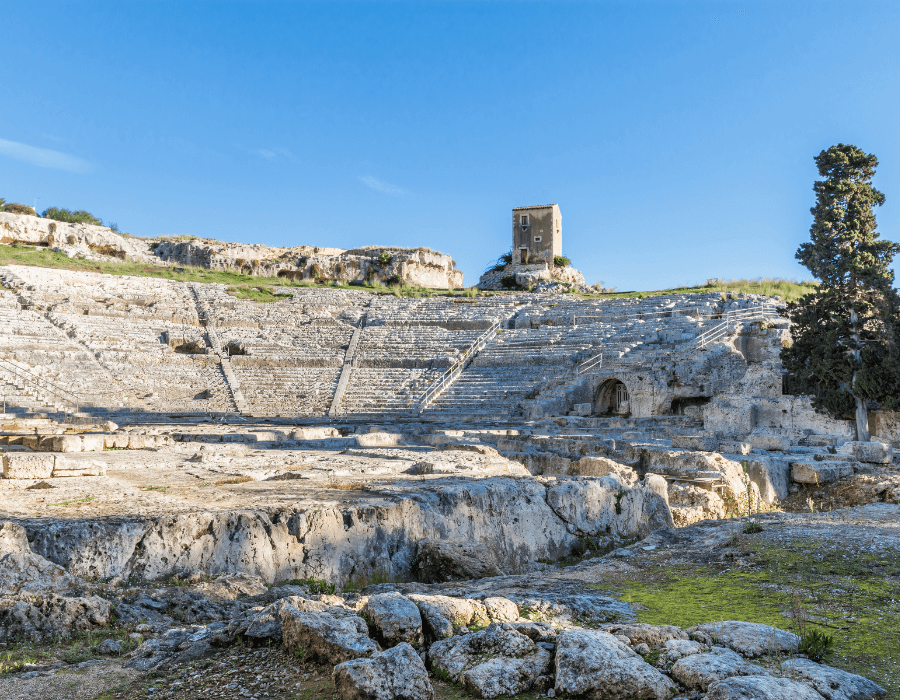 Syracuse's incredibly preserved Greek theatre
Syracuse's incredibly preserved Greek theatre
Whilst the island citadel of Ortygia is the most atmospheric part of the city, the most impressive remnants of the ancient city are to be found on the mainland in the Parco Archeologico della Neapolis, and this is where your Siracuse explorations should begin. The highlight of ths wonderful archaeological park is its 5th-century-BC Greek theatre, which boasted a whopping capacity of 16,000 spectators in antiquity. To give you a sense of Syracuse’s pivotal ancient importance, Aeschylus himself is recorded to have attended premieres of his own plays here.
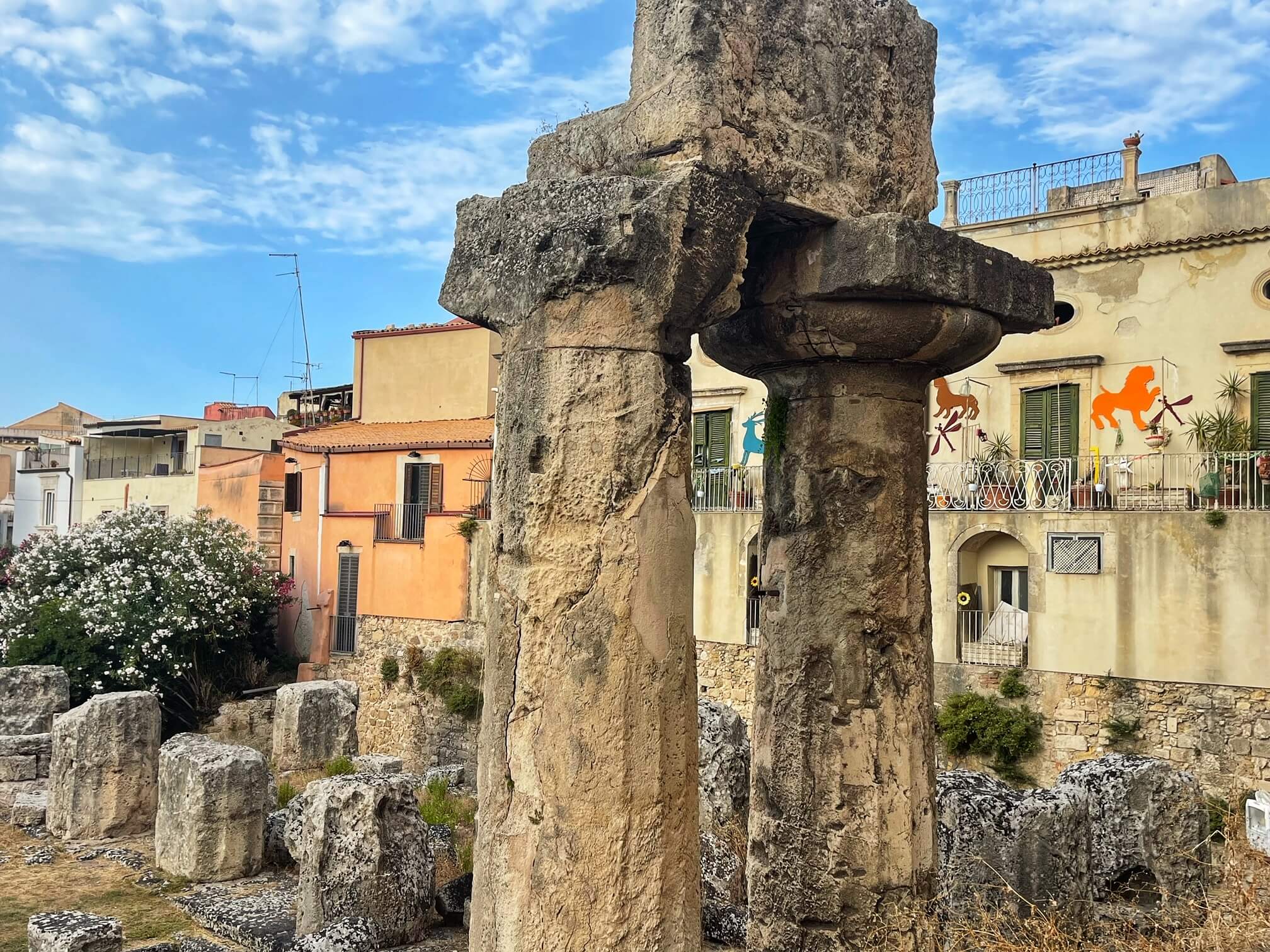 The Temple of Apollo
The Temple of Apollo
After crossing a picturesque bridge to get back onto Ortygia, you’ll soon come across another relic of the city’s distant past - meaty Doric columns that once carried aloft the pediment of the Greek Temple of Apollo. Venture further into the beguiling labyrinth of streets and alleys that make up the old town and you’ll emerge blinking into the light in Piazza Duomo, home to the city’s flamboyant Baroque cathedral.
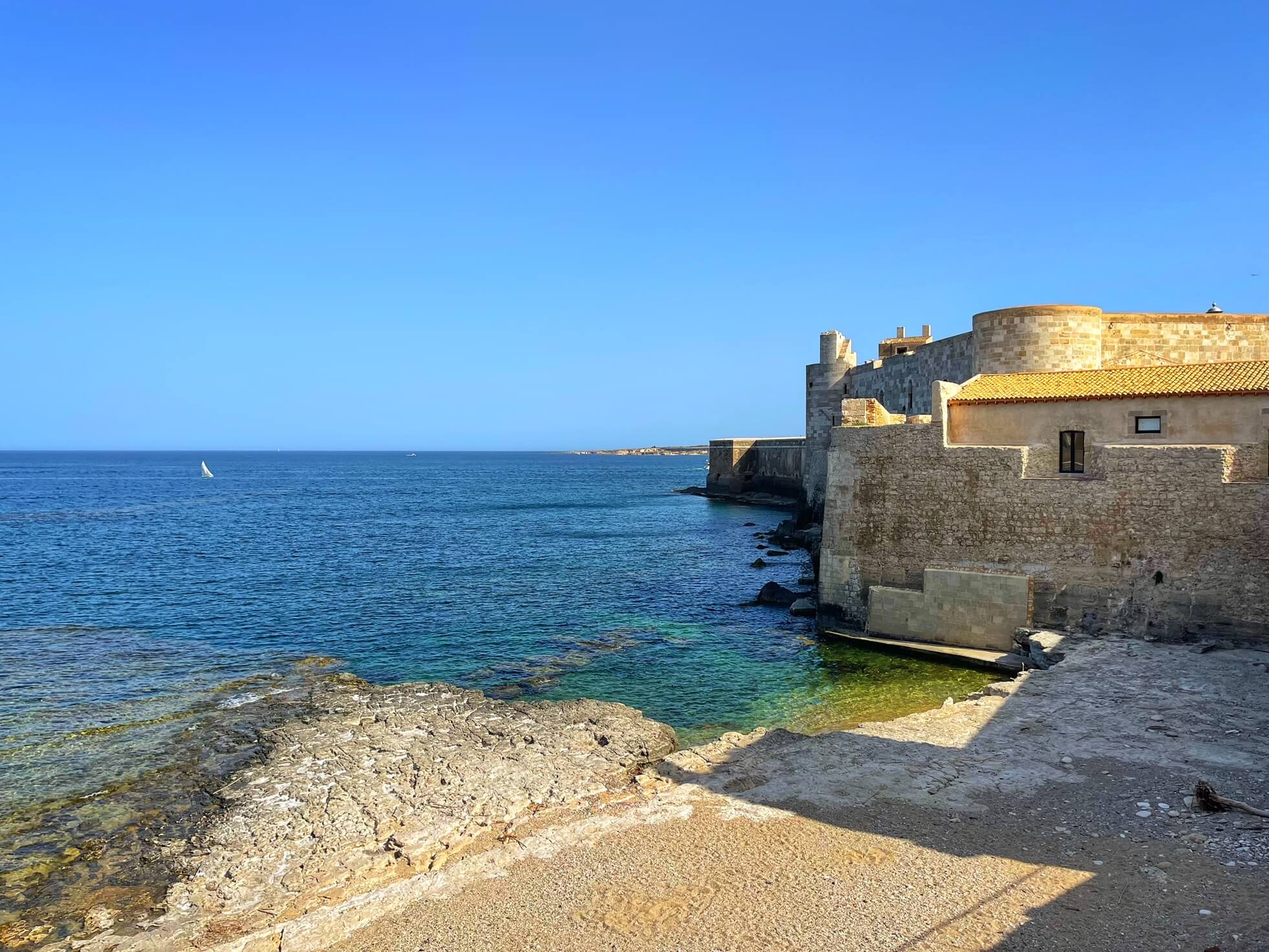 The waterfront Castello Maniace
The waterfront Castello Maniace
Keep going towards the island’s tip, and pass the Fonte Artusa, an ancient freshwater spring thick with the papyrus for which ancient Syracuse was famous. Right at the edge of Ortigia, finally, rises the spectacular 13th-century waterfront bastion Castello Maniace.
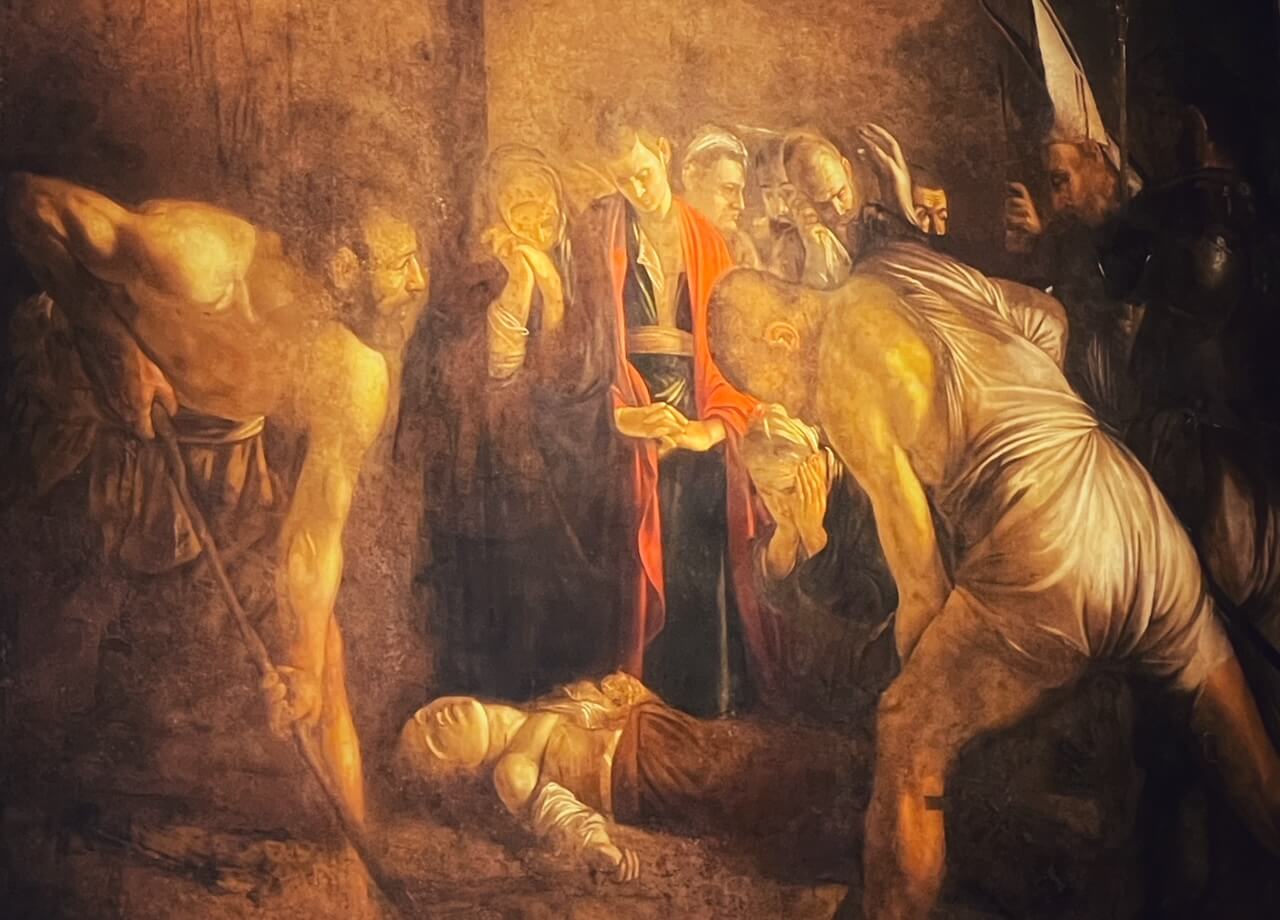 Caravaggio's Burial of St. Lucy
Caravaggio's Burial of St. Lucy
Art lovers meanwhile will be sure to seek out Caravaggio’s masterful Burial of St. Lucy, hidden away in a church in the suburbs that doubles as the legendary site of the saint’s burial. It’s a dark and brooding masterpiece that seems to speak powerfully to the artist’s frame of mind when he painted the altarpiece in 1608, hunted by assasins and on the run from the implacable Knights of Malta. He would die just over a year later, one of the greatest artistic careers of all cut short at the age of just 38.
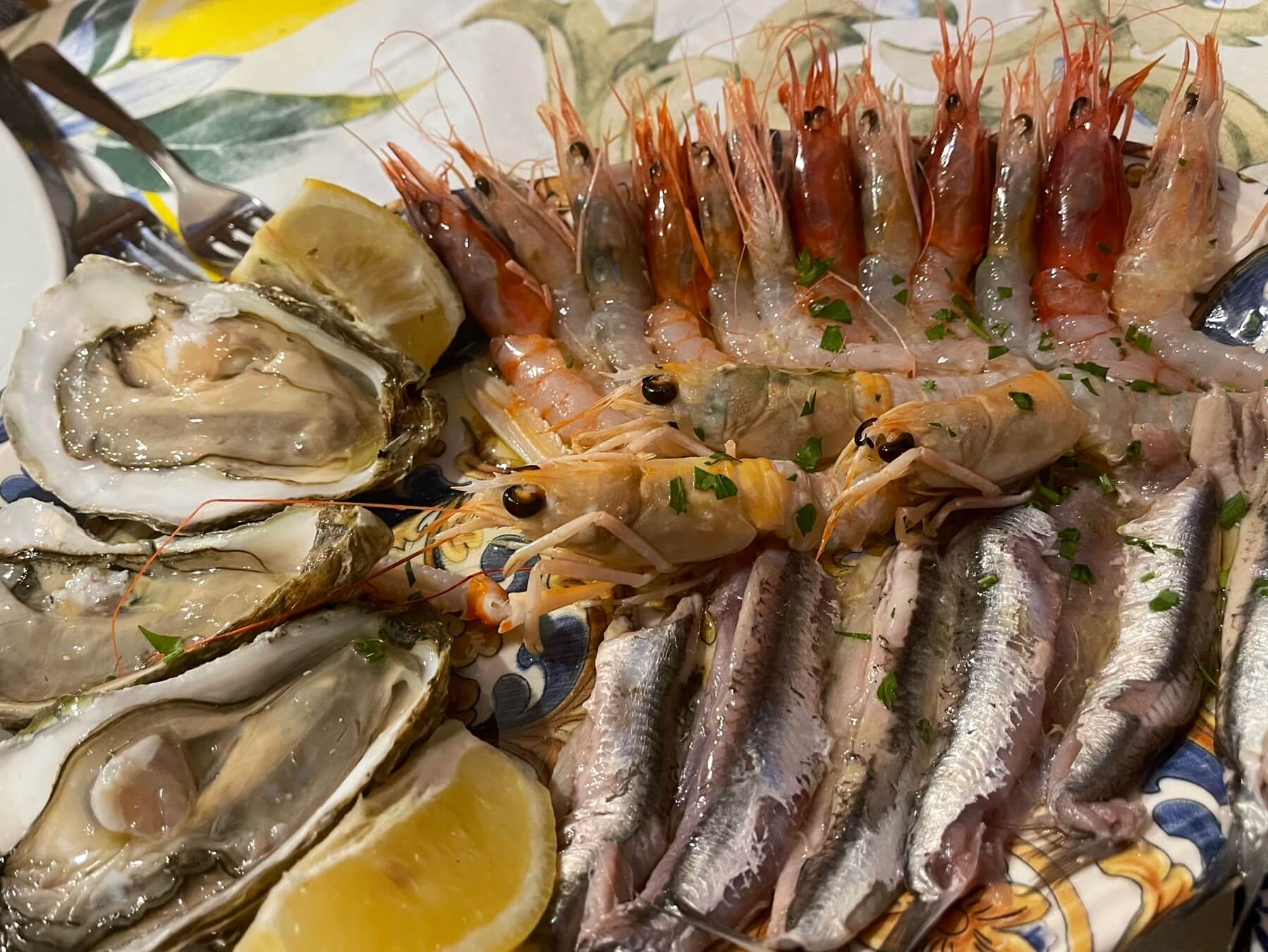 A fishy feast at Da Carlo
A fishy feast at Da Carlo
You’ll be hard pressed to eat badly anywhere in Syracuse. The city’s thriving restaurant scene is unsurprisingly focused on fresh (and raw) fish - skip lunch and arrive hungry for the epic €40 tasting menu at Apollonion Osteria da Carlo for a real fishy treat. Take a spin in the chaotic market to discover more foodie delights: Caseficio Borderi is regarded by many as purveyor of the world’s finest sandwiches, whilst fishmonger-cum-casual-eatery Cappuccio serves up some of the meanest tuna and swordfish burgers you can find anywhere.
We hope you enjoyed our mid-August tour of Sicily’s largest cities! Stay tuned next week when our Sicilian adventures will continue in the spectacular Baroque cities of the Val di Noto, a must-visit for architecture lovers.
